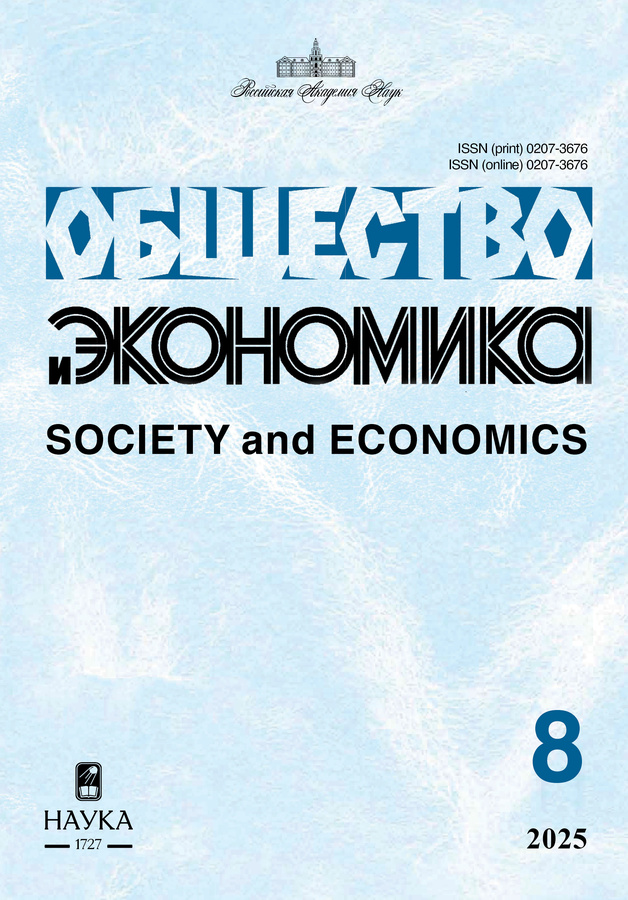Foreign investments in Russia under external restrictions: results and prospects
- Authors: Kvashnina I.1
-
Affiliations:
- Institute of Economics (RAS)
- Issue: No 8 (2025)
- Pages: 70-81
- Section: WORLD ECONOMY
- URL: https://rjonco.com/0207-3676/article/view/692693
- ID: 692693
Cite item
Abstract
The article examines the interim results of the economic sanctions against cross-border capital flows and the countermeasures taken. It is noted that the emphasis in Western sanctions is shifting towards minimizing the possibilities of making international payments, and companies, financial organizations and individuals from neutral countries are becoming objects of sanctions pressure. The evolution of Russian countermeasures, on the one hand, is aimed at reviving the economy and investment activity, and on the other, at protecting the domestic market from unwanted capital outflow and controlling the activities of foreign investors in the country. An analysis of the statistics of the Bank of Russia shows that after passing the acute phase of 2022, indicators related to cross-border generally return to their previous tracks, which confirms the fact that all entities engaged in foreign economic activity have adapted to the new conditions. Russian businesses have been able to reformat their foreign assets by transferring them to Russian jurisdiction or to neutral countries. As for incoming direct investment, so far their inflow from friendly countries has not compensated in quantitative and qualitative terms for the consequences of the departure of “Western” investors.
Keywords
About the authors
I. Kvashnina
Institute of Economics (RAS)
Author for correspondence.
Email: irina.kvashnina@gmail.com
Moscow, Russian Federation
References
- Квашнина И.А. Трансформация мировых потоков капитала // Международная экономика. 2022. № 10. С. 688–698.
- Обзор финансовой стабильности. IV кв. 2024 – I кв. 2025 года // Банк России. URL: https://www.cbr.ru/finstab/review/ (дата обращения: 30.05.2025).
- Ушкалова Д.И. Эскалация санкционного давления: новые риски для внешней торговли России // Вестник Института экономики Российской академии наук. 2024. № 6. С. 24–39.
- Переход С.А., Мхитарян А.В., Селифонкина Д.С. Международные санкции против России (2014–2024 гг.): оценка и последствия для финансового рынка // Вестник Института экономики Российской академии наук. 2024. № 4. С. 116–138.
- Квашнина И.А. Россия в международном движении капитала: адаптация к новым условиям // Общество и экономика. 2024. № 11. С. 61–73.
- Комментарии о Государстве и Бизнесе № 493 от 30 июля 2024 г. // Высшая школа экономики. Центр Развития. URL: https://dcenter.hse.ru/mon/71896859/947443431.html (дата обращения: 25.03.2025).
- Российская экономика под санкционным давлением: промежуточные итоги (2022–2025 гг.) и перспективы развития // Под ред. М.Ю. Головнина. М.: ИЭ РАН. 2025. 120 с.
- Место уходящих иностранных компаний в экономике отраслей и регионов России // Российский экономический университет им. Плеханова. Доклад. Вып. 2. 2024.
- Пылин А.Г. Тренды торгово-экономического взаимодействия России со странами Центральной Азии // Вестник Института экономики Российской академии наук. 2024. № 3. С. 76–87.
- Основные направления единой государственной денежно-кредитной политики на 2025 год и период 2026 и 2027 годов // Банк России. URL: https://www.cbr.ru/about_br/publ/ondkp/on_2025_2027/
- Земцов С.П. Источники роста деловой активности в регионах России в условиях внешних шоков // Журнал Новой экономической ассоциации. 2025. № 1 (66). С. 291–300.
- Кузнецов А. Экспорт и импорт прямых инвестиций: история крупных российских потерь с начала ХХ века // Проблемы прогнозирования. № 4 (199). 2023. С. 32–41.
Supplementary files










